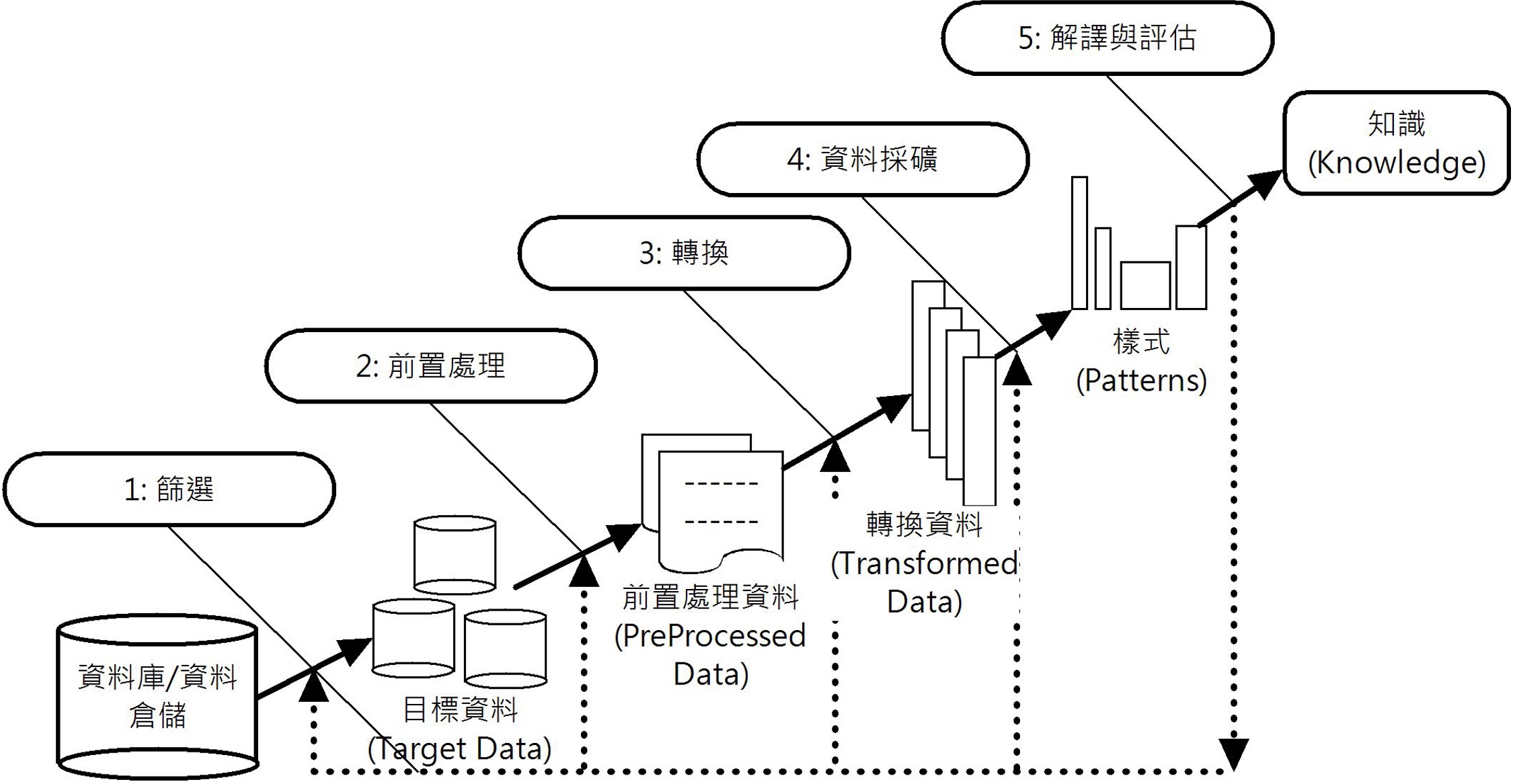本筆記來自資工系資料科學導論課程,第一章!
Foundations of Data Science
- 資料科學是一個完整過程的研究方法,包括蒐集資料、觀察資料、探索資料和提出假設,然後驗證結果(使用統計或數學方法)。
- 資料科學使用的資料不是原始資料(Raw Data),而是一種有意義的資料,稱為資訊(Information),知識就是連接的資訊。
Types of data
Structured, Unstructured
- Structured data

- Unstructured data: need data cleaning to make it structured

- half-structured data: eg. json

質的資料與量的資料 (Qualitative and Quantitative Data)

- 質的資料(Qualitative Data)
- 名目尺度(Nominal Data)
- 用來區分不同類別的資料,但沒有順序之分。
- eg. 性別、國籍、學校名稱
- 順序尺度(Ordinal Data)
- 有順序之分,但沒有固定的間隔。
- eg. 學生的成績、學生的年級,例如:快樂程度 5 高於 1;滿意度 8 小於 10 等。
- 名目尺度(Nominal Data)
- 量的資料(Quantitative Data)
- 間隔尺度(Interval Data)
- 有固定的間隔,但沒有絕對零點。
- eg. 溫度、時間
- 比例尺度(Ratio Data) - 有固定的間隔,且有絕對零點。 - eg. 身高、體重、年齡


- 間隔尺度(Interval Data)
Five Steps of Data Science
- 「資料採礦」(Data Mining):find pattern(樣式),是使用軟體技術分析資料庫儲存的龐大資料,以便從這些資料中找出隱藏的規則性或因果關係。
- Goals of Data Mining:
- Prediction
- Predict based on possesed data. eg. Predict the stock price.
- Identification
- eg. Identify spam email by finding the pattern.
- Classification
- eg. Classify the types of user, and send ads accordingly.
- Optimization
- eg. 便利商店因為賣場面積有限,只能銷售 1000 種商品,我們需要最佳化商品的選擇、選購動線設計和商品排列的架位,以便創造最大的營業額。
- Prediction
Data Mining steps (KDD steps)
從原始資料(Raw Data)開始,經過多個步驟的處理後,直到從資料探索出知識為止。這個過程稱為知識發現(Knowledge Discovery in Databases, KDD)。

Data Mining Process
資料科學和資料分析(Data Analytics)最大差異在於資料科學必須遵循結構化步驟。

- Define the problem (ask an interesting question)
- Collect the data:取得所有與問題相關的原始資料(Raw Data)
- Explore the data:進一步整理、歸納和描述資料,以便進行資料分析(Data Analysis)。
- Model the data:comfirm previous assumptions,使用統計和機器學習模型來驗證提出的假設
- Communicate and visualize the results:使用圖表等視覺化方式來呈現結果。
test : 考情境判斷,判斷情況是哪種資料採礦的步驟。